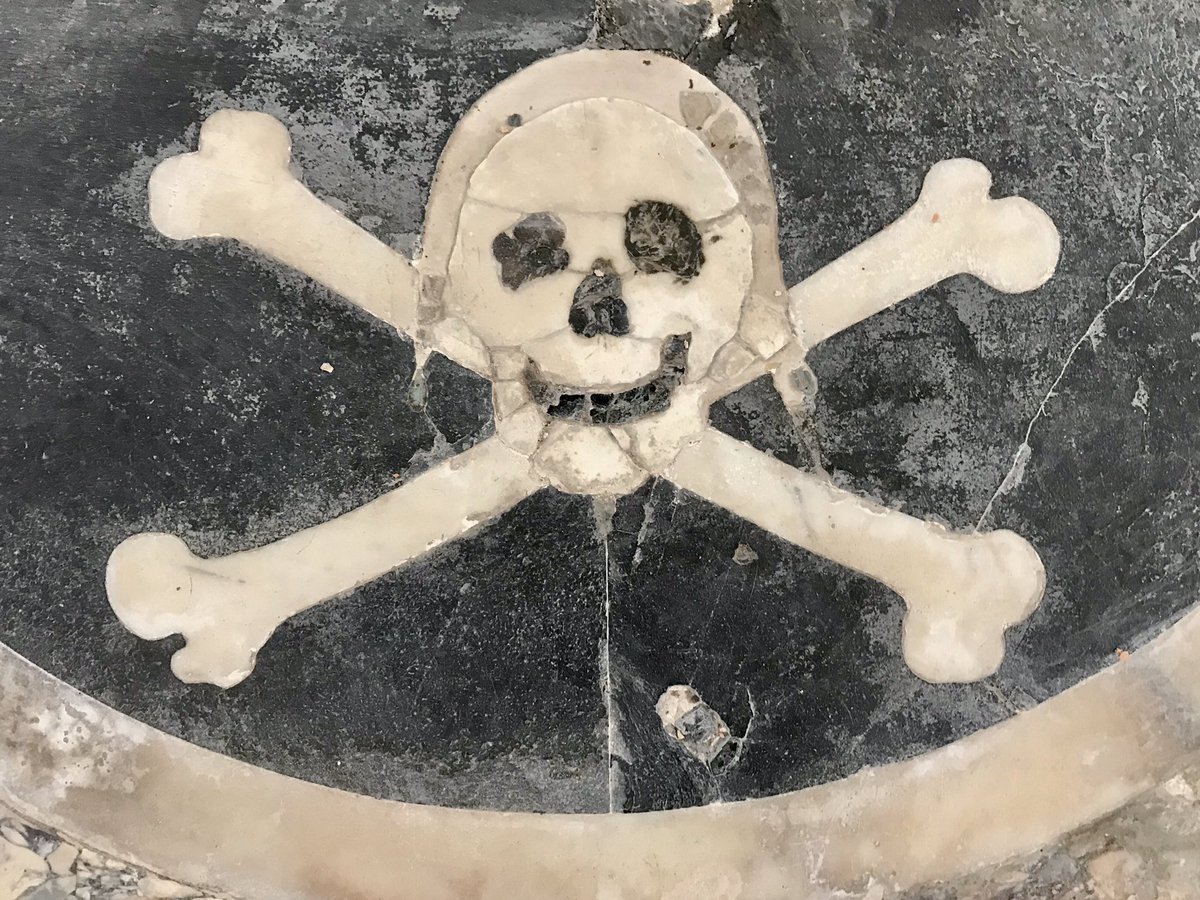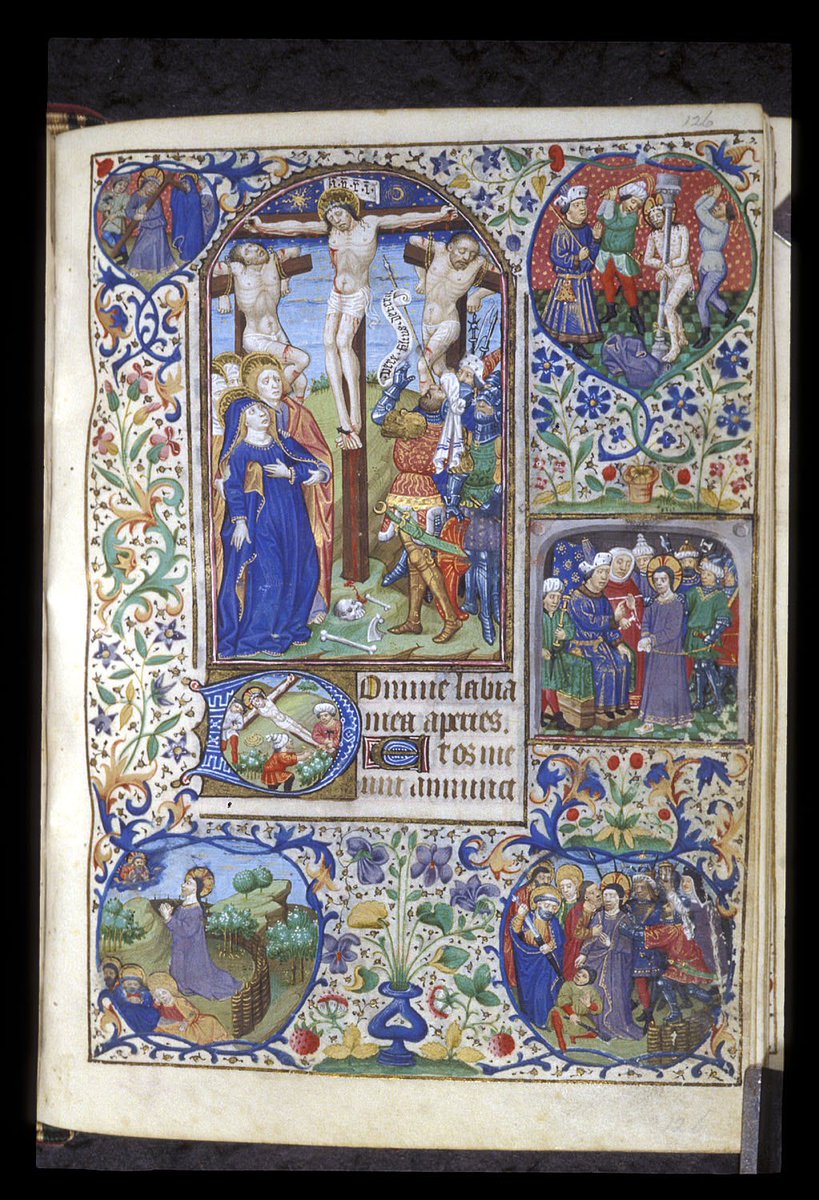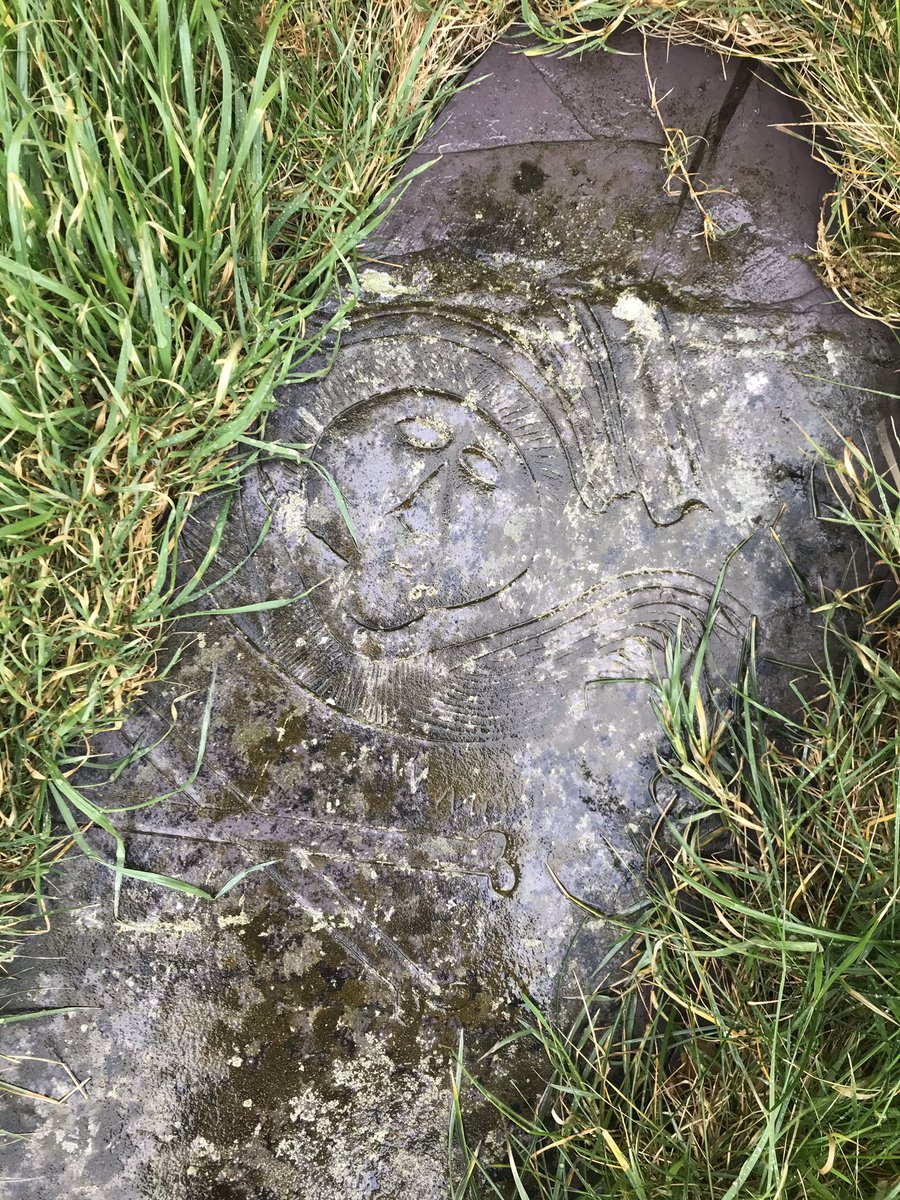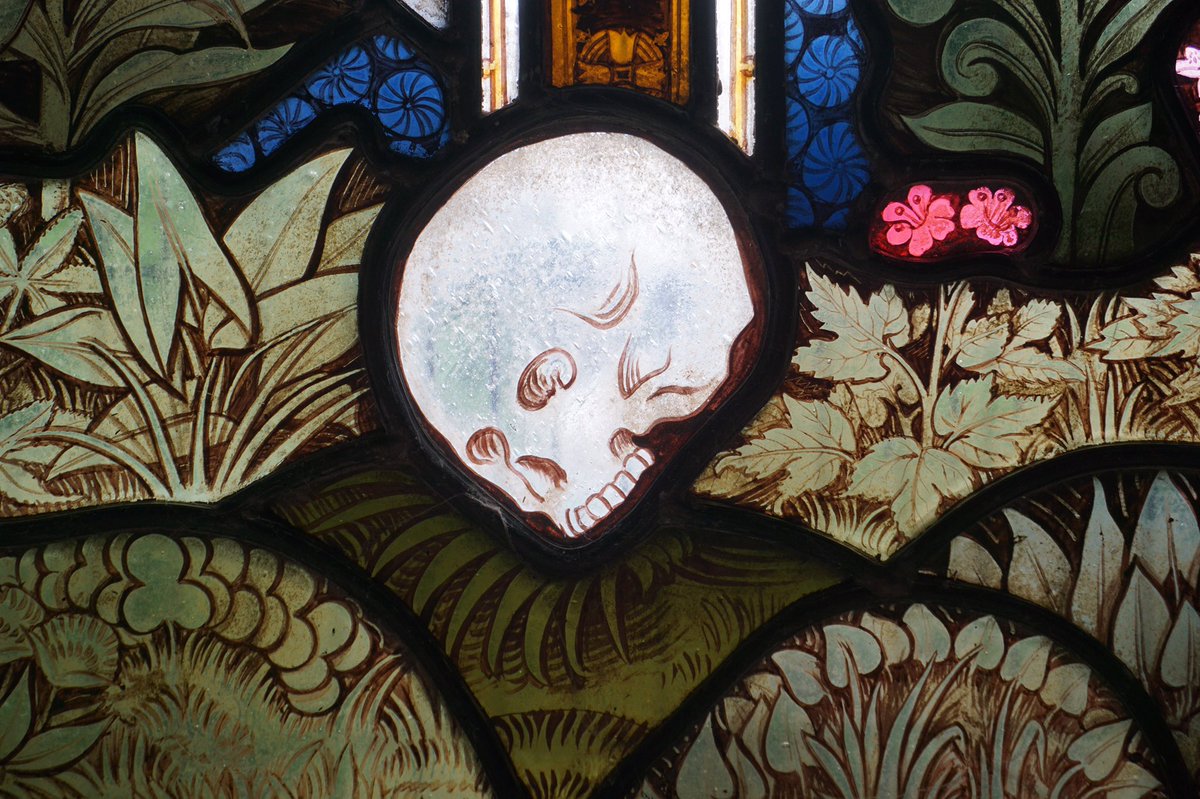For most of us, the skull and crossbones represents danger. Pirates or poison usually...
So why do you find them all over churches?
To unravel the symbol, we need to go to the foot of the cross on which Jesus is crucified.
There you will find a skull.
#thread
(1/6)
So why do you find them all over churches?
To unravel the symbol, we need to go to the foot of the cross on which Jesus is crucified.
There you will find a skull.
#thread
(1/6)
Early sources suggest this is Adam’s skull... Christ’s blood dripping onto the skull represents forgiveness of sins and everlasting life.
The skull and crossbones in churches are memento mori - reminding one of the inevitability of death and the hope of resurrection.
(2/6)
The skull and crossbones in churches are memento mori - reminding one of the inevitability of death and the hope of resurrection.
(2/6)
Fast forward a few centuries and ship captains drew little skull and crossbones in the records next to the names of the sailors that died at sea…
The skull and crossbones became a marker of death.
 https://abs.twimg.com/emoji/v2/... draggable="false" alt="☠️" title="Skull and crossbones" aria-label="Emoji: Skull and crossbones">
https://abs.twimg.com/emoji/v2/... draggable="false" alt="☠️" title="Skull and crossbones" aria-label="Emoji: Skull and crossbones">
(3/6)
The skull and crossbones became a marker of death.
(3/6)
The skull and crossbones is synonymous with pirates, though in the early days, sea criminals didn’t necessarily use this symbol – solid colours, bleeding hearts, hourglasses, etc have all been recorded as pirate flags.
(4/6)
 https://abs.twimg.com/emoji/v2/... draggable="false" alt="📸" title="Camera with flash" aria-label="Emoji: Camera with flash"> St Baglan, Llanfaglan
https://abs.twimg.com/emoji/v2/... draggable="false" alt="📸" title="Camera with flash" aria-label="Emoji: Camera with flash"> St Baglan, Llanfaglan
(4/6)
It wasn’t until 1720 that the skull and crossbones became widely known as a warning of danger. This was when the pirate Calico Jack Rackham was captured. His trial rocked the country. And his symbol? A skull with the crossbones replaced with swords.
(5/6)
 https://abs.twimg.com/emoji/v2/... draggable="false" alt="📸" title="Camera with flash" aria-label="Emoji: Camera with flash">: @badger_beard
https://abs.twimg.com/emoji/v2/... draggable="false" alt="📸" title="Camera with flash" aria-label="Emoji: Camera with flash">: @badger_beard
(5/6)
By the mid-19th century, manufacturers were using the skull and crossbones to symbolise things that were dangerous - poisonous, toxic. And it’s been used ever since.
The symbol has come along way from foot of the cross on Golgotha!
(6/6)
 https://abs.twimg.com/emoji/v2/... draggable="false" alt="📸" title="Camera with flash" aria-label="Emoji: Camera with flash">: St John the Baptist, Allington
https://abs.twimg.com/emoji/v2/... draggable="false" alt="📸" title="Camera with flash" aria-label="Emoji: Camera with flash">: St John the Baptist, Allington
The symbol has come along way from foot of the cross on Golgotha!
(6/6)

 Read on Twitter
Read on Twitter

 St Baglan, Llanfaglan" title="The skull and crossbones is synonymous with pirates, though in the early days, sea criminals didn’t necessarily use this symbol – solid colours, bleeding hearts, hourglasses, etc have all been recorded as pirate flags.(4/6)https://abs.twimg.com/emoji/v2/... draggable="false" alt="📸" title="Camera with flash" aria-label="Emoji: Camera with flash"> St Baglan, Llanfaglan" class="img-responsive" style="max-width:100%;"/>
St Baglan, Llanfaglan" title="The skull and crossbones is synonymous with pirates, though in the early days, sea criminals didn’t necessarily use this symbol – solid colours, bleeding hearts, hourglasses, etc have all been recorded as pirate flags.(4/6)https://abs.twimg.com/emoji/v2/... draggable="false" alt="📸" title="Camera with flash" aria-label="Emoji: Camera with flash"> St Baglan, Llanfaglan" class="img-responsive" style="max-width:100%;"/>
 : @badger_beard" title="It wasn’t until 1720 that the skull and crossbones became widely known as a warning of danger. This was when the pirate Calico Jack Rackham was captured. His trial rocked the country. And his symbol? A skull with the crossbones replaced with swords.(5/6)https://abs.twimg.com/emoji/v2/... draggable="false" alt="📸" title="Camera with flash" aria-label="Emoji: Camera with flash">: @badger_beard" class="img-responsive" style="max-width:100%;"/>
: @badger_beard" title="It wasn’t until 1720 that the skull and crossbones became widely known as a warning of danger. This was when the pirate Calico Jack Rackham was captured. His trial rocked the country. And his symbol? A skull with the crossbones replaced with swords.(5/6)https://abs.twimg.com/emoji/v2/... draggable="false" alt="📸" title="Camera with flash" aria-label="Emoji: Camera with flash">: @badger_beard" class="img-responsive" style="max-width:100%;"/>
 : St John the Baptist, Allington" title="By the mid-19th century, manufacturers were using the skull and crossbones to symbolise things that were dangerous - poisonous, toxic. And it’s been used ever since.The symbol has come along way from foot of the cross on Golgotha!(6/6)https://abs.twimg.com/emoji/v2/... draggable="false" alt="📸" title="Camera with flash" aria-label="Emoji: Camera with flash">: St John the Baptist, Allington" class="img-responsive" style="max-width:100%;"/>
: St John the Baptist, Allington" title="By the mid-19th century, manufacturers were using the skull and crossbones to symbolise things that were dangerous - poisonous, toxic. And it’s been used ever since.The symbol has come along way from foot of the cross on Golgotha!(6/6)https://abs.twimg.com/emoji/v2/... draggable="false" alt="📸" title="Camera with flash" aria-label="Emoji: Camera with flash">: St John the Baptist, Allington" class="img-responsive" style="max-width:100%;"/>


